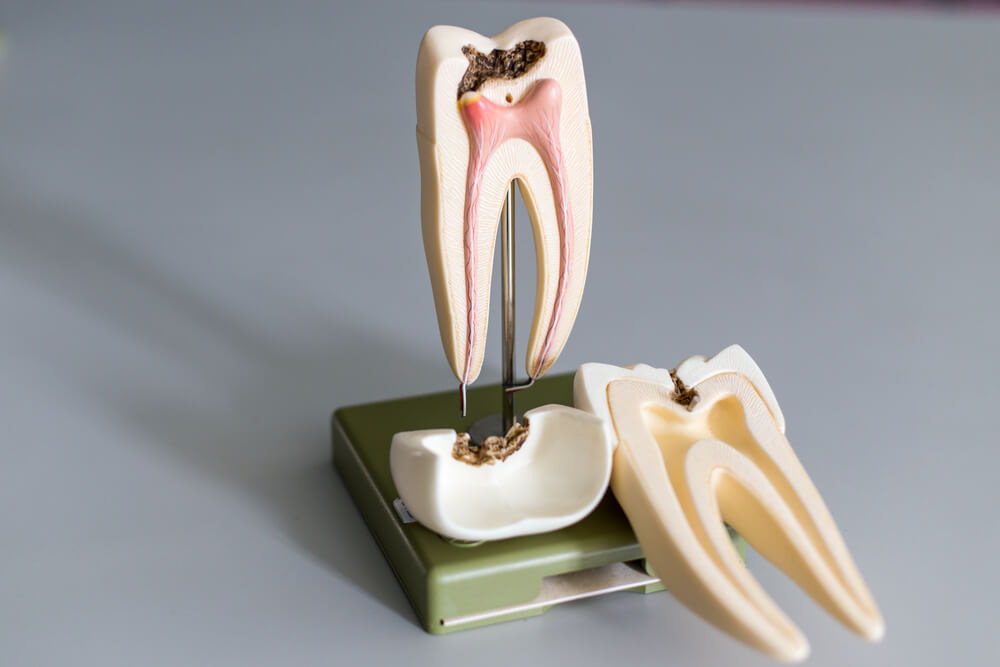What is Root Canal Therapy?
Root Canal Therapy or Root Canal Treatment is also known as Endodontic Therapy. Root Canal Therapy is a dental procedure for removing the infection from the inside of a tooth. Many people refer to this treatment simply as a “root canal.” However, a “root canal” is a hollow section of the tooth that contains the nerve tissue and other cells known as the pulp. When damage or infection occurs in the pulp, root canal therapy eliminates bacteria from the infected root canal, preventing reinfection of the tooth and saving the natural tooth. The inflamed or infected pulp is removed and the inside of the tooth is disinfected, filled, and then sealed.
3 Steps to Root Canal Therapy
Root canal therapy is done in 3 steps, and it takes between one and three sessions to complete depending on the tooth and the choice of the dental crown material.
1. Cleaning The Root Canal
First, the dentist removes everything that is inside the root canal. Under local anesthetics, the dentist makes a small access hole on the surface of the tooth and removes the diseased and dead pulp tissue with tiny files.
2. Filling The Root Canal
Next, the dentist cleans, shapes, and disinfects the area using tiny files and irrigation solutions. Then, the tooth is filled with a specially designed material, using adhesive cement to seal the canals completely.
After root canal therapy, you will no longer feel any pain in that tooth because the nerve tissue has been removed and the infection has been removed. Treatment often takes only one appointment, but if there are curved canals, multi-canals, or large infections, this could take one or two appointments.
3. Adding a Crown
After the procedure, the tooth will be more fragile than it was before. That is why a crown usually pairs with a root canal. Our Single-Visit Crown Technology (CEREC) allows our patients the convenience of having the entire procedure completed in one visit. This is not only convenient for our patients but also decreases any chance of contamination and reinfection to the treated tooth.
Does Root Canal Therapy Hurt?
One of the biggest dental myths is that getting root canal treatment is painful. The truth is that the pain comes from the infection and not from the treatment. The treatment does not cause pain; it alleviates pain. Patients are given local anesthetics, which means root canal therapy isn’t any more painful than a regular filling.
After the treatment, some tenderness is normal. It is temporary and can be relieved by regular over-the-counter medications. If needed, Dr. Wolter may prescribe an antibiotic to treat & prevent infection or prescribe specific pain relief medicine.
How Do You Know If You Need A Root Canal?
Root canals are needed for cracked teeth caused by injury, deep cavities, or issues from a previous filling. The easiest sign that a root canal is needed is when you notice your teeth are sensitive to hot and cold sensations.
Here are a few symptoms that Root Canal Therapy can help resolve:
- Severe pain while chewing or biting
- Pimples on the gums
- A chipped or cracked tooth
- Lingering sensitivity to hot or cold, even after the sensation has been removed
- Swollen or tender gums
- Deep decay or darkening of the gums
Can I Go To School Or Work After Getting A Root Canal?
The local anesthetics from the procedure should wear off after 2-4 hours. Most of our patients return to school or work right after their appointment. For your safety, we ask that you do not eat until the numbness is completely gone.


